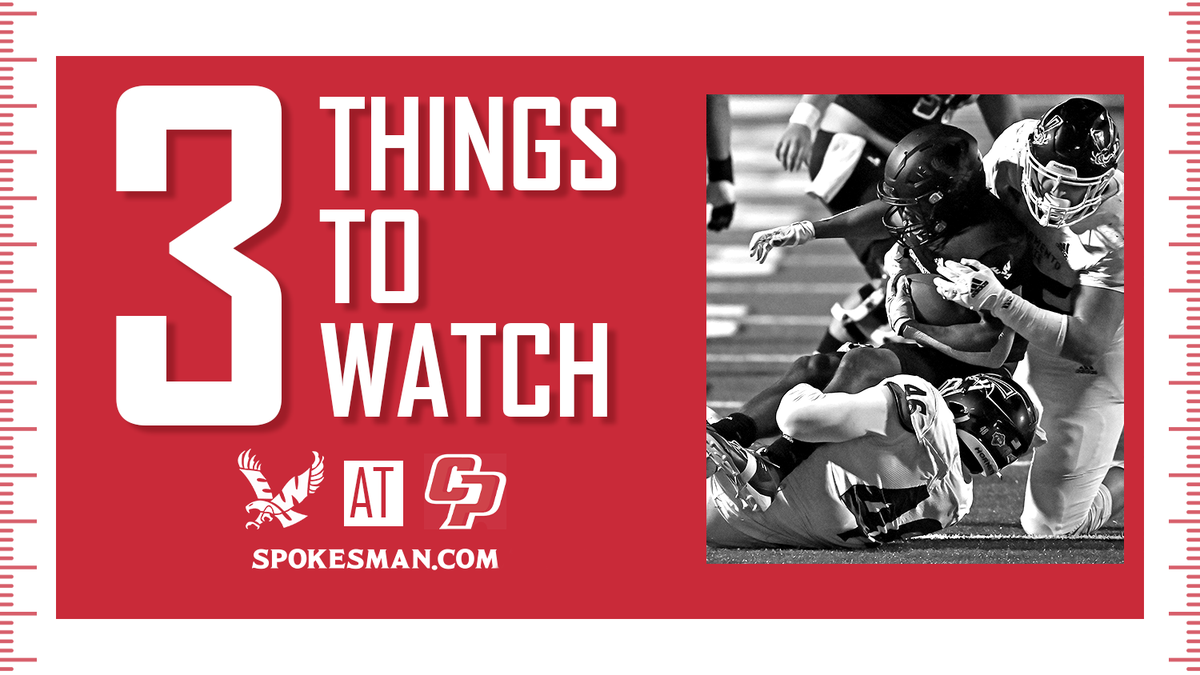Things to watch: Eastern Washington must pressure quarterback to earn first Big Sky win

Saturday’s game in San Luis Obispo, California, is the opposite of a homecoming for three members of the Cal Poly football team’s coaching staff, who will be hosting an Eastern Washington program that historically they’ve called their own when the teams kick off at 5 p.m.
Mustangs head coach Beau Baldwin, running game coordinator Paul Wulff and passing game coordinator Erik Meyer all had successful runs in Cheney.
Baldwin and Wulff each coached the program to multiple Big Sky championships during the past two decades; Meyer won the 2005 Walter Payton Award as Eagles quarterback and later served on Eastern’s coaching staff.
All that is relevant because for the first time in four Big Sky games this year, Eastern is going to face a team that looks much more like itself.
The transformation from a run-first program to a pass-intensive (but balanced) offense isn’t complete, Baldwin said, but the team has made massive strides from where it was when he took over after the 2019 season.
“We’re still not even close to our long-term goals of who we want to be and what we want to look like,” Baldwin said on Wednesday, “but we’ve made tremendous strides since the spring of ’21.”
Saturday’s game is the first between the programs since Eastern’s 52-point win over Cal Poly in that shortened spring season. Here are three aspects to watch:
• Whose receivers make the biggest impact? Mustangs grad student Chris Coleman has the second-most receiving yards in the conference (616) and averages 17.1 yards per catch. Baldwin said he brings a lot of versatility to their receiving group. “He’s not only leading our team in receiving, he’s leading in explosive plays,” Baldwin said. “He finds a way to make explosive (plays) even in our base offense.” Coleman has also been impressively consistent, with at least 74 receiving yards in each game this year. Eastern’s wide receivers didn’t have a 100-yard game this year until Efton Chism III caught nine balls for 129 yards and two scores last week, an encouraging outing for an offense that had been held under 260 yards passing four straight games. Eastern has primarily used four receivers – Chism, Freddie Roberson, Nolan Ulm and Jakobie James – and Robert Mason III played last week for the first time since the Oregon loss on Sept. 10. Both teams have plenty of depth at receiver and players capable of making the plays Baldwin mentioned.
• How much can the Eagles disrupt the Mustangs’ pocket? After recording four sacks in their opener against Tennessee State and three against Montana State, the Eagles have just one sack in their past three games. They have also forced just three fumbles since forcing three against TSU alone, and they haven’t had a game with more than five tackles for loss since playing Montana State. Cal Poly, though, has allowed the second-most sacks in the Big Sky (18). With as often as the Mustangs will likely throw the ball, the Eagles’ defense may finally have more chances to go after the quarterback than it has had since facing Oregon. If the Eagles can take an early lead, they will only get more opportunities.
• Can Eastern finally contain a running game? The Mustangs haven’t effectively run this season, but they’ve also lost five of their six games and been forced to go into catch-up mode in nearly all of them.
Nevertheless, Eastern will be facing a Cal Poly offense that has averaged 3.1 yards per carry and has attempted a conference-low 179 rushes. The Eagles were a middle-of-the-pack rushing defense a year ago (seventh in the Big Sky), and Saturday’s game gives them an opportunity to show that their struggles to stop the run were primarily a product of playing some run-early, run-often offenses. The Eagles haven’t held an opponent under 200 yards rushing or produced more yards on the ground than their opponent. If they can achieve both this week, that bodes well for Eastern’s hopes of earning its first conference win of the season.